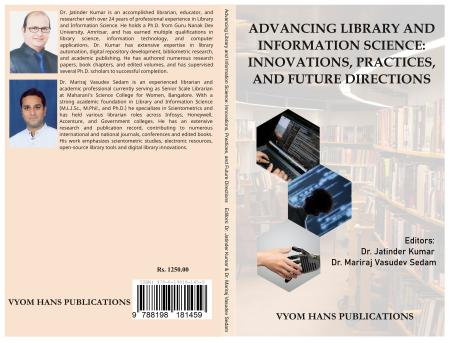INTEGRATING DIGITAL LIBRARIES INTO THE FRAMEWORK OF THE NATIONAL EDUCATION POLICY 2020
Synopsis
With the support of inclusive learning, digital transformation, and multidisciplinary education, the National Education Policy (NEP) 2020 seeks to overhaul India's higher education system. The digitalization of libraries is a crucial part of this change since they are vital knowledge centres that support research, free access, and lifelong learning. The transition from traditional to digital libraries is examined in this article, with an emphasis on how these libraries might improve accessibility, lower expenses, and promote education that is multidisciplinary and research-focused. Despite their benefits, digital libraries—especially those in rural and underdeveloped areas—face concerns related to cybersecurity, digital literacy gaps, and infrastructure. To enhance digital libraries in line with NEP 2020, the paper addresses tactics including investing in digital infrastructure, promoting open-access materials, using AI driven cybersecurity measures, and creating multilingual content. With the speed at which Blockchain, cloud computing, and artificial intelligence are developing, digital libraries have the potential to significantly influence how higher education is shaped in the future. Institutions may close the digital divide and establish an inclusive, tech-driven academic ecosystem by tackling current issues and utilizing new technologies, which will guarantee the accomplishment of NEP 2020's goals.





